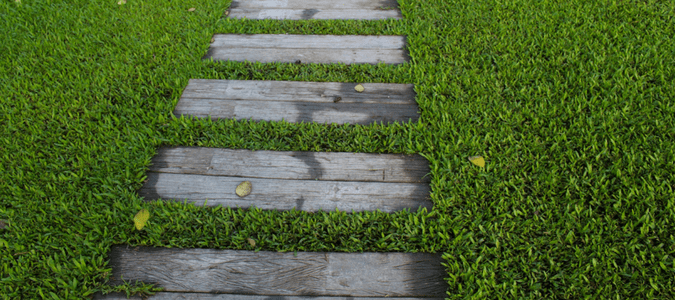
Many homeowners spend hours of hard work on their yard in the hopes of getting a lush, thick, green carpet of grass. If you look closely, you’ll probably notice that St. Augustine grass is a key part of many picture-perfect yards in your neighborhood.
St. Augustine Grass: Is It Right For Your Lawn?
St. Augustine is a very common type of lawn grass in parts of the United States which have mild winters. But is it right for your lawn? What kinds of pests call St. Augustine grass home? How do you take care of St. Augustine grass? Let’s explore more in depth below.
What Should I Know About St. Augustine Grass?
St. Augustine grass is a medium-to-high-maintenance grass that does best in the southern United States. Ask anyone about St. Augustine grass and they’ll all say they love the carpet-like look and feel of it.
St. Augustine is characterized by broad, flat blades of grass, deep green in color. It is one of those grasses that spreads through interconnected runners, which creates that dense feel. Although you can get seeds for St. Augustine, most often, the grass is typically grown through plugs, or through sod, so there’s no need to wait to get your green carpet.
There are nine varieties of St. Augustine:
- Captiva, which requires less mowing and is more resistant to chinch bugs.
- Floratam, a variety which is resistant to chinch bugs, but not the best choice for shady areas or during times of drought.
- Floratine, darker and finer than most varieties of St. Augustine, and which requires less mowing and tolerates colder temperatures.
- Palmetto, a type of St. Augustine which is lighter and smaller than most varieties.
- Raleigh, known to be a higher maintenance variety, as it is more vulnerable to pests and disease.
- Sapphire, a beautiful dark, blue-green colored type of St. Augustine.
- Seville, which is recognized by its fine texture.
- Sir Walter, a type which is distinct because of its ability to resist heat and drought
- Texas Common, which, as the name suggests, is closest to the original form of St. Augustine, but is also most susceptible to St. Augustine disease.
Disadvantages of St. Augustine Grass
As beautiful as St. Augustine grass is, it can also be a bit high maintenance. While it can tolerate a wide variety of temperatures, it doesn’t do as well in areas where drought is a problem. In certain areas of Texas, this type of grass will wither and die fairly quickly during the heat of summer, if proper irrigation isn’t maintained.
Another issue with St. Augustine is chinch bugs. Chinch bugs love two things–hot, dry weather and St. Augustine grass. They can destroy whole swaths of lawn in almost no time, especially when the grass is already stressed by dry weather, inadequate irrigation or drought. How do you know if you have a chinch bug problem? It isn’t always obvious, because a chinch bug infestation can look like brown patch disease or the effects of drought to the untrained eye. Brown patch does have a distinctive circular pattern to it, where chinch bugs create an irregular pattern of dead and dying grass.
St. Augustine Grass Care
The best way to make sure your St. Augustine grass stays lush and green and doesn’t provide a home for chinch bugs is proper lawn maintenance. Since St. Augustine is susceptible to damage caused by drought and heat, keeping your lawn well-watered is essential for long-term health and keeping chinch bugs away, especially during the dog days of summer.
Proper maintenance also includes making sure to cull the underlying thatch. Because St. Augustine grass is so thick, thatch (a thick layer of dead grass found between the top of the grass and the soil below the growing area) can build, providing the perfect environment for chinch bugs.
Thatch can be controlled by making sure the lawn is mowed properly each time and that clippings are picked up quickly. St. Augustine lawns should be mowed at least once a week during growing season using a mulching type mower, so smaller clippings hit the soil; smaller clippings are more easily decomposed than larger blades. Mulching mowers not only help keep your St. Augustine lawn healthier, but it reduces the need for fertilizer.
Another way to maintain your St. Augustine lawn is to aerate your lawn each year. When a lawn is aerated, holes are punched into the soil to increase the chances of air and water getting through the thatch and thick underlying layers of grass. You can find aeration machines for rent at your local hardware store.
Keep Your Grass Greener With ABC’s Help
Proper watering and maintenance can keep your St. Augustine lawn looking lush, green, happy and healthy. If you struggle to find the time to take care of your lawn, or don’t have the tools or expertise, the lawn care experts at ABC Home & Commercial Services can help. Whether it’s performing regular mowing or fertilizing or even adjusting your watering by helping with your irrigation system, let the experts take care of your lawn so you can enjoy it!
